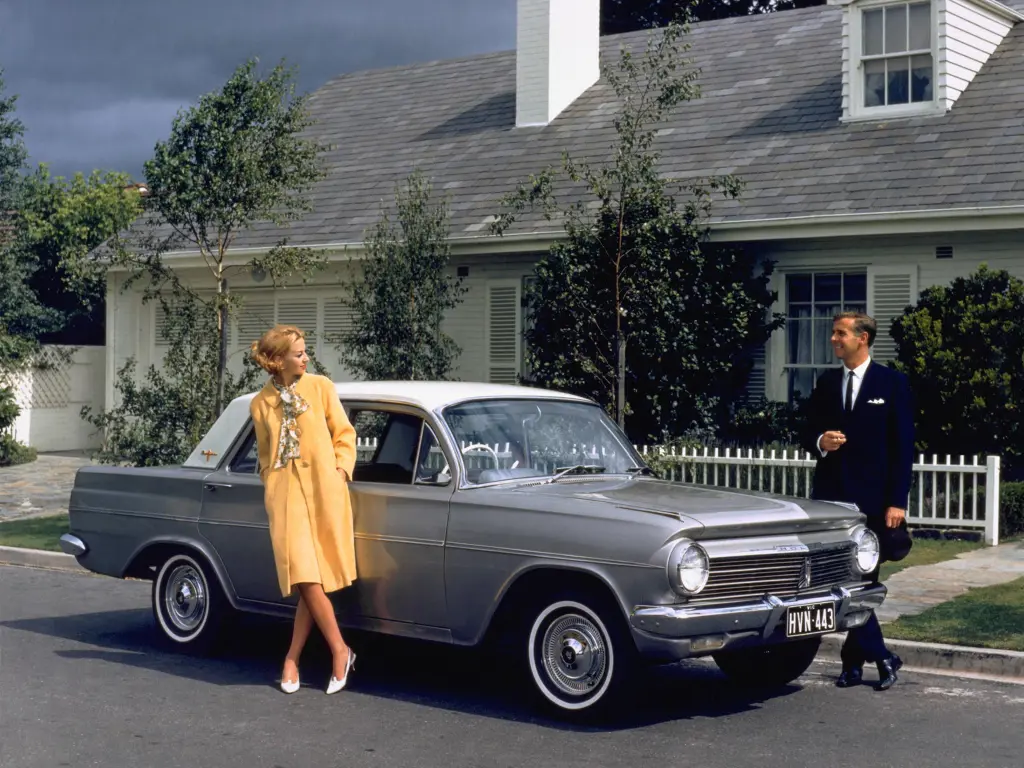THE HOLDEN EH – A CELEBRATION
26 April 2023
Many years ago, I was behind the wheel of a vehicle that belonged more to Melbourne or Sydney than to the outskirts of Southampton. The car in question was a privately imported 1965-registered Holden EH Standard, and I have craved one of my own ever since.
General Motors acquired the Holden firm of coachbuilders in 1931, where they assembled Vauxhalls, Chevrolets, Pontiacs and Buicks for the local market. The first car to be badged as Holden was the 1948 48-215, which achieved almost instant popularity as “Australia’s Own Car”. By the mid-1950s Holden held more than 50% of the Australian car market, and the EH, launched in August 1963, was designed to continue this success.

Within 18 months ‘General Motors Holden’, aka GMH, built 256,959 EHs, making it the fastest-selling Australian car. According to the sales copy, this was “the lowest-cost way to enjoy full-size, six-cylinder motoring”. The entry-level Standard offered drivers on a modest income a chance to own a car with “Holden’s exciting new Power-Swept styling”. Better still, the price was just £A2,102 - the same as its EJ predecessor. The EH came in sedan, station wagon, panel van and pick-up truck forms, while owners raved about the smooth and flexible 2.4-litre ‘Red’ engine and the precise three on-the-column.
The mid-range ‘Special’ was less spartan than the Standard, while your friendly local Holden dealer could recommend any number of ‘NASCO’ accessories. The ‘Hood Ornament’ was apparently ‘aesthetically styled for extra beauty’, although the ‘Venetian Shade’ for the rear windshield and the ‘Insect Screen’ were of more practical use.
As for the Premier flagship, it featured bucket front seats, carpets, leather trim, metallic paint, a folding rear armrest, a ‘Diamond Dot’ AM radio, and, of course, extra chrome. There was also a 2.9-litre power plant combined with Hydramatic transmission to display the owner’s social status even further. Meanwhile, the fact that the EH wore the badges of a domestic marque remained a significant sales asset.
In terms of rivals, the locally-built Ford Falcon was handsome but initially proved unreliable. Chrysler offered the stylish and very popular Valiant while BMC-Australia produced was the Austin Freeway and the Wolseley 24/80. The last-two were the Austin A60 Cambridge and Wolseley 16/60 fitted with a 2.4 six- cylinder engine unavailable in the UK. All these competitors had considerable domestic content but were based on US or British designs while the EH was a recognisably Australian product.
Holden replaced the EH with the HD in February 1965, but the new model never captured the public imagination . To quote my report from Classic & Sports Car: “The EH was always going to be a tough act to follow, and today it is rightly placed - together with Skippy and The Seekers - as one of the major Australian icons of the 1960s”. Absolutely -
